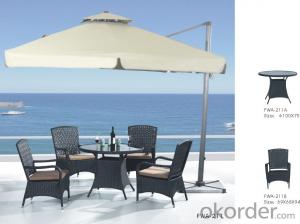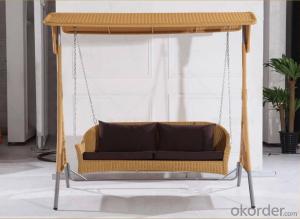Anodized Aluminum Stock
Anodized Aluminum Stock Related Searches
Led Light Bulbs For Ceiling Fixtures Led Lamps For Ceiling 42 In Ceiling Fan With Light Aluminum Coil Stock For Gutters Aluminum Foil For The Grill Hole Saw For Aluminum Plate Aluminum Tread Plate For Trailer Bow Plate For Aluminum Boat Aluminum Foil For Grow Room Aluminum Foil For Joint PainHot Searches
Stock Price For Aluminum Aluminum Coil Stock For Sale Aluminum Gutter Coil For Sale Used Aluminum Scaffolding For Sale 1/4 Aluminum Plate For Sale Aluminum Bar Stock For Sale Aluminum Round Stock For Sale Aluminum Diamond Plate For Sale Aluminum Scaffolding For Sale Craigslist 6061 Aluminum Plate For Sale Aluminum Dock Plate For Sale 7075 Aluminum Plate For Sale Aluminum Tread Plate For Sale Aluminum Checker Plate For Sale Aluminum Plate For Sale Near Me Plate Aluminum For Sale Aluminum Plate For Sale Aluminum Square Stock For Sale Aluminum Flat Stock For Sale Billet Aluminum Stock For SaleAnodized Aluminum Stock Supplier & Manufacturer from China
Okorder.com is a professional Anodized Aluminum Stock supplier & manufacturer, offers integrated one-stop services including real-time quoting and online cargo tracking. We are funded by CNBM Group, a Fortune 500 enterprise and the largest Anodized Aluminum Stock firm in China.Hot Products
FAQ
- Yes, aluminum sheets can be suitable for electrical bus bars in certain applications. Aluminum has several properties that make it a viable option for bus bars. Firstly, aluminum is a lightweight material, which can be advantageous in applications where weight reduction is important. Additionally, aluminum has good electrical conductivity, although it is not as conductive as copper. However, aluminum bus bars can still handle high electrical currents and are commonly used in power distribution systems. One downside of aluminum bus bars is that they have a higher resistance compared to copper bus bars. This means that they can generate more heat, especially under high current loads. To mitigate this issue, aluminum bus bars are often designed with larger cross-sectional areas to reduce resistance and dissipate heat more effectively. Another challenge with aluminum bus bars is their susceptibility to oxidation and corrosion. This can be addressed by applying protective coatings or using alloys with better corrosion resistance. It is also important to ensure proper insulation and avoid contact with dissimilar metals to prevent galvanic corrosion. In summary, aluminum sheets can be suitable for electrical bus bars, especially in applications where weight reduction is important. However, careful consideration must be given to factors such as electrical conductivity, heat dissipation, and corrosion resistance to ensure optimal performance and longevity of the bus bars.
- Aluminum sheets utilize a variety of alloys, each possessing distinct properties and advantages. The following are some commonly employed alloys: 1. The 3003 alloy offers exceptional formability, corrosion resistance, and weldability, making it suitable for general-purpose use. It finds applications in cooking utensils, signage, and chemical equipment. 2. Known for its high strength and good corrosion resistance, the 5052 alloy is frequently utilized in marine and automotive fields. It is also employed in sheet metal fabrication and structural components. 3. The 6061 alloy is highly versatile and finds application in several sectors such as aerospace, automotive, and structural components. It provides excellent strength, machinability, and weldability. 4. Primarily used in aerospace and high-strength applications, the 7075 alloy boasts an exceptional strength-to-weight ratio. It is commonly employed in aircraft fittings, gears, and bike frames. 5. The 2024 alloy, popular in aerospace applications, exhibits a high strength-to-weight ratio and excellent fatigue resistance. It is commonly used for aircraft structures, bolts, and rivets. 6. The 5083 alloy, specifically designed for marine applications, showcases outstanding corrosion resistance and high strength. It is frequently utilized for boat hulls and structural components. These are merely a few instances of the diverse alloys employed in aluminum sheets. Each alloy possesses a unique combination of properties that enable it to excel in specific applications.
- The thickness of an aluminum sheet directly affects its strength. In general, a thicker sheet of aluminum will be stronger than a thinner one. This is because the thickness of the sheet determines the amount of material present, which in turn affects the sheet's ability to withstand external forces or loads. The strength of a material is typically measured by its ability to resist deformation or failure under stress. Thicker aluminum sheets have a greater volume of material, which means there are more atoms and bonds available to withstand forces. This results in a higher resistance to deformation or failure, making the sheet stronger. Additionally, a thicker aluminum sheet also has a higher load-bearing capacity. This means it can support heavier loads or withstand higher pressures without deforming or failing. The increased thickness provides more material to distribute the load, reducing the stress on individual atoms and bonds within the sheet. However, it is important to note that there is a limit to the thickness at which the strength of the aluminum sheet plateaus. Beyond a certain point, further increasing the thickness may not significantly improve its strength. This is because the material properties of aluminum, such as its crystal structure and grain boundaries, also play a role in determining its strength. In conclusion, the thickness of an aluminum sheet directly affects its strength. Thicker sheets have more material, enabling them to resist deformation or failure under stress more effectively. This increased thickness also allows them to support heavier loads or withstand higher pressures. However, there is a limit to the thickness at which the strength plateaus, as other material properties come into play.
- who knows the ceiling technology of aluminum sheet?
- Construction technology of ceiling aluminum sheet: (1) firstly check keel’s quality, the straight shape and uniformly forced state of boom, control the keel’s gap within 500mm, reduce the gap according to design requirement under humid environment. The lower surface of keel is smooth without a sense of bearing down, main device is closely connected with accessories, it can be bound after being confirmed qualified.(2) we should break the board along the cutting line and ensure the margin of cutting board straight and square without any chipping or arris defect. (3) while placing and fixing the board, we can place edge of aluminum-plastic panel(encapsulated edge) in the vertical direction of supporting keel, there is a phenomena of hanging. Aluminum-plastic panel should be placed closely in the process of butt joint, it can’t be pressed. You can start from a plate angle or middle position, and don’t place them at the same time. Slab joint should be straight and in the same width, without break joint. (4) in the process of joint, Aluminum-plastic panel should be placed closely in the process of butt joint, it can’t be pressed. And the butt joint should be stagger, the butt joint can’t be connected on the same keel. When you use doubling plate, the joints of the second layer board and the first layer board can’t be connected with the same keel, double-deck gypsum board should be staggered joints.
- Yes, 101 aluminum sheets can be used in the production of musical instruments. Aluminum is a lightweight and durable metal that is commonly used in the manufacturing of various musical instruments. It offers good resonating properties and can produce a bright and clear sound. Additionally, aluminum is highly malleable, allowing it to be easily shaped and formed into different components of musical instruments such as bodies, frames, or keys. Therefore, 101 aluminum sheets can certainly be utilized in the production of musical instruments, contributing to their overall quality and performance.
- what kind of aluminum sheet is suitable for aluminum alloy double-edged saw?
- saw web size depends on the thickness and height of sectional material,equipment compatibility and permitted installed saw web size .
- I know that aluminum doesn't belong in the human body. As a canister to hold liquids which will be consumed later, is aluminum good or bad to use?
- Not really. Al in your diet is believed to be a cause of Alzheimer's disease. And putting acids (like fruit juice) in a bottle would definitely corrode the metal somewhat; water is slower but there is a taste that means that some Al is going in. Thus many (most/all?) Al bottles are lined in plastic and have plastic closures. Stainless steel with a stainless steel closure are a much better choice than Al. But they are harder to find and often more expensive. Stainless steel with polyprop. closures but not plastic lined are easier to find (but less durable; I am forever breaking off the poly tabs). Of course Al bottles are better than plastic bottles.














































